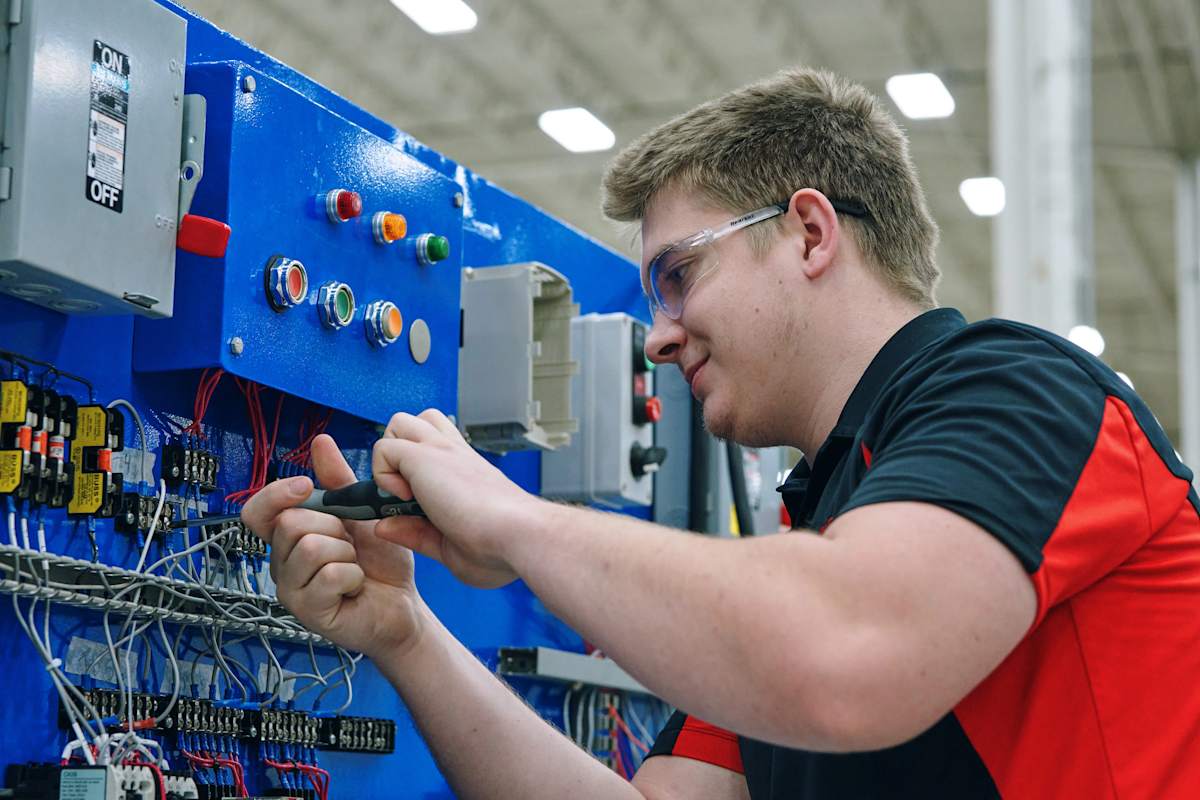WHAT IS AN HVACR MAINTENANCE TECHNICIAN?
What is a maintenance technician? Learn about a maintenance technician job description, how to become a maintenance technician, salary and more.
Key Points
Energy is a basic human necessity. Without it, we could not cool or heat our homes, cook, commute or access the internet. The demand for energy in turn creates a demand for energy technician skills.
According to the Bureau of Labor Statistics (BLS), total energy technician employment is expected to exceed 503,000 in the U.S. by 2033.74 At 17%, this growth rate is faster than average.64
A career in energy technology can be exciting for anyone who wants a job that matters, enjoys problem-solving and appreciates working with their hands. Does this sound like you? If so, keep reading to learn what energy technology is, why it matters, job outlook and more.
Energy technology generates, converts, stores and distributes various forms of energy for use in a safe and economically responsible manner to improve the quality of life for people around the world.
Examples of energy sources include gas, oil, coal, nuclear, wind, solar, hydropower and more. As the demand for energy increases, so does the need for sustainable, renewable energy sources like wind, solar and hydropower.
Renewable energy technologies aren’t only more sustainable, but they’re also more cost-effective. Producing a megawatt-hour of electricity from a wind turbine costs $26 to $50 while producing a megawatt-hour of electricity from the least expensive type of natural gas costs $45 to $74.
According to the U.S. Energy Information Administration (EIA), renewable energy technologies accounted for 21.4% of utility-scale electricity generation in 2023. The shift toward renewable energy sources calls for a fresh set of knowledge and skills that most aspiring technicians receive from an energy technology program like the Wind Turbine and Industrial Maintenance Technician programs offered at Universal Technical Institute (UTI).1
Multiple sectors within our society rely on energy and power technology.
The most well-known sectors are residential and commercial buildings, as they require lighting, cooling, heating and more. However, energy technology is also crucial to the transportation and manufacturing industries. Both industries rely on energy sources, such as natural gas and coal, to stay running.
A few energy and power technology examples include:
UTI’s campus in Canton, Michigan, offers students up-to-date knowledge about the current state and future of energy and power technology. Here, students can sharpen their abilities in both non-renewable and renewable energy technologies.
Upon successful completion of the Wind Turbine or Industrial Maintenance Technician program in Canton, students can enroll in an Energy Technology Program, where they can earn an Associate of Applied Science (AAS) degree!
The program was developed in direct response to feedback from industry leaders seeking qualified employees. The energy technology courses combine the wind and industrial maintenance programs into a single curriculum.
Wind turbine training covers safety standards, wind turbine operation technology and components, renewable energy technologies, electrical theory and more, while the industrial maintenance training program teaches students to maintain, diagnose and repair equipment that generates power. Whichever program the student did not complete as their prerequisite is the course material they will take in the Energy Technology Program.
Teaching students both specialties helps them gain a comprehensive set of skills that can be applied across many fields within the energy industry.

Some of the topics covered throughout the energy programs include:
The AAS path requires an additional nine months of studying, for a total of 16 months.
Energy-focused training programs are also offered at other UTI campuses across the country, which you can explore here.
Upon graduating, students will have a foundation of knowledge and entry-level technical skills that future employers can build on.1
According to the BLS, the average median annual salary for energy technicians in the United States was $61,420 in May 2023.60 This means half of the energy technicians earned more and half earned less. Keep in mind that salary depends on several factors, including experience, employer, demand and cost of living in the area.
Energy and power technology technician skills are in demand across the solar, wind, oil, gas, coal, nuclear and power distribution industries. Let’s look at a few of the most common energy technology careers within these industries.
Graduates of UTI’s energy technology programs are prepared to pursue one of the following entry-level roles.
Our grads are prepared to pursue entry-level roles. As with any industry, over time technicians may be able to advance in their careers with experience and hard work.77 Advanced careers could include:
Energy technology is crucial to our daily lives. Without it, we would not have the ability to power our vehicles, air conditioners or heaters, or enjoy warm water. Energy technology also helps reduce our dependence on non-renewable energy sources, ensuring our quality of life will be maintained in a safe, efficient and affordable manner.
Energy technology is an exciting industry with a range of paths students can pursue after graduation. Studying energy technology could also be good for current energy technicians interested in gaining the skills vital to the future of the industry.
Energy and power technology evolves with how we use it. Recently, there has been a shift toward renewable energy technologies, such as solar, wind and hydropower.
We hope our ultimate guide has helped you answer, “What is energy technology and why does it matter?” Trained energy technicians are valuable to our society. Are you ready to train for a career in energy technology?
Aspiring energy technicians can get started with wind turbine or industrial maintenance training at our campus in Canton, Michigan!
Still have questions? Request more info online and we’ll connect you with an Admissions Representative!
Universal Technical Institute of Illinois, Inc. is approved by the Division of Private Business and Vocational Schools of the Illinois Board of Higher Education.